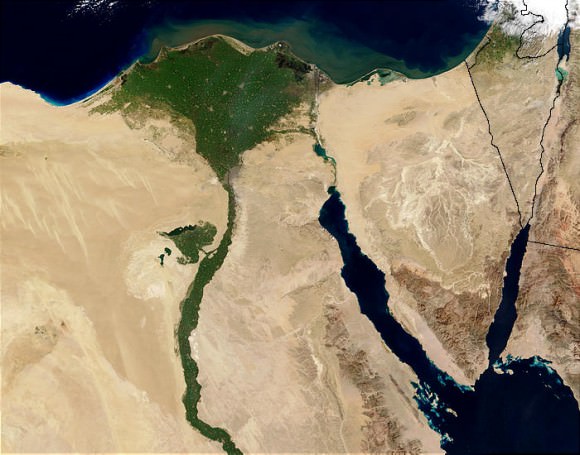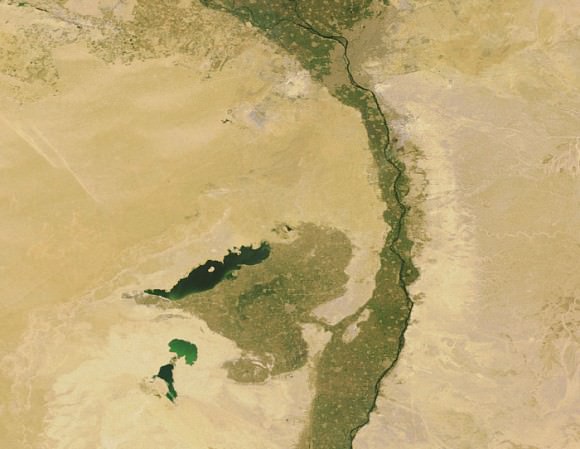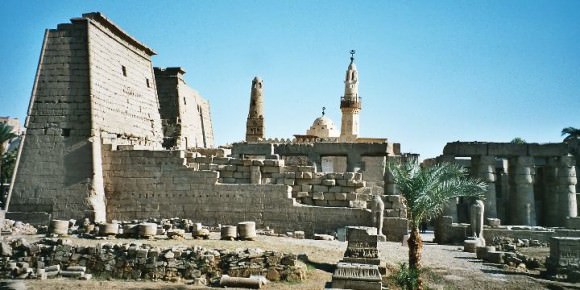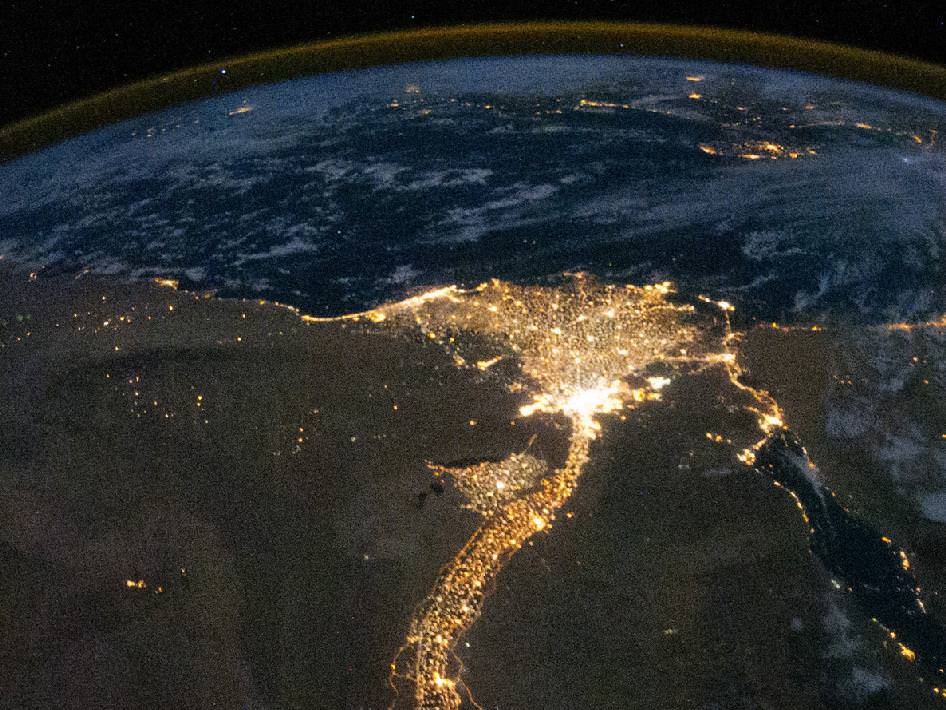Planet Earth boasts some very long rivers, all of which have long and honored histories. The Amazon, Mississippi, Euphrates, Yangtze, and Nile have all played huge roles in the rise and evolution of human societies. Rivers like the Danube, Seine, Volga and Thames are intrinsic to the character of some of our most major cities.
But when it comes to the title of which river is longest, the Nile takes top billing. At 6,583 km (4,258 miles) long, and draining in an area of 3,349,000 square kilometers, it is the longest river in the world, and even the longest river in the Solar System. It crosses international boundaries, its water is shared by 11 African nations, and it is responsible for the one of the greatest and longest-lasting civilizations in the world.
Officially, the Nile begins at Lake Victoria – Africa’s largest Great Lake that occupies the border region between Tanzania, Uganda and Kenya – and ends in a large delta and empties into the Mediterranean Sea. However, the great river also has many tributaries, the greatest of which are the Blue Nile and White Nile rivers.
The White Nile is the source of the majority of the Nile’s water and fertile soil, and originates from Africa’s Great Lakes region of Central Africa (a group that includes Lake Victoria, Edward, Tanganyika, etc.). The Blue Nile starts at Lake Tana in Ethiopia, and flows north-west to where it meets the Nile near Khartoum, Sudan.

Credit: Jacques Descloitres/NASA/GSFC
The northern section of the Nile flows entirely through the Sudanese Desert to Egypt. Historically speaking, most of the population and cities of these two countries were built along the river valley, a tradition which continues into the modern age. In addition to the capitol cities of Juba, Khartoum, and Cairo, nearly all the cultural and historical sites of Ancient Egypt are to be found along the riverbanks.
The Nile was a much longer river in ancient times. Prior to the Miocene era (ca. 23 to 5 million years ago), Lake Tangnayika drained northwards into the Albert Nile, making the Nile about 1,400 km. That portion of the river became blocked by the bulk of the formation of the Virunga Mountains through volcanic activity.
Between 8000 and 1000 B.C.E., there was also a third tributary called the Yellow Nile that connected the highlands of eastern Chad to the Nile River Valley. Its remains are known as the Wadi Howar, a riverbed that passes through the northern border of Chad and meets the Nile near the southern point of the Great Bend – the region that lies between Khartoum and Aswan in southern Egypt where the river protrudes east and west before traveling north again.
The Nile, as it exists today, is thought to be the fifth river that has flowed from the Ethiopian Highlands. Some form of the Nile is believed to have existed for 25 million years. Satellite images have been used to confirm this, identifying dry watercourses to the west of the Nile that are believed to have been the Eonile.

This “ancestral Nile” is believed to be what flowed in the region during the later Miocene, transporting sedimentary deposits to the Mediterranean Sea. During the late-Miocene Era, the Mediterranean Sea became a closed basin and evaporated to the point of being empty or nearly so. At this point, the Nile cut a new course down to a base level that was several hundred meters below sea level.
This created a very long and deep canyon which was filled with sediment, which at some point raised the riverbed sufficiently for the river to overflow westward into a depression to create Lake Moeris southwest of Cairo. A canyon, now filled by surface drift, represents an ancestral Nile called the Eonile that flowed during the Miocene.
Due to their inability to penetrate the wetlands of South Sudan, the headwaters of the Nile remained unknown to Greek and Roman explorers. Hence, it was not until 1858 when John Speke sighted Lake Victoria that the source of the Nile became known to European historians. He reached its southern shore while traveling with Richard Burton on an expedition to explore central Africa and locate the African Great Lakes.

Believing he had found the source of the Nile, he named the lake after Queen Victoria, the then-monarch of the United Kingdom. Upon learning of this, Burton was outraged that Speke claimed to have found the true source of the Nile and a scientific dispute ensued.
This in turn triggered new waves of exploration that sent David Livingstone into the area. However, he failed by pushing too far to the west where he encountered the Congo River. It was not until the Welsh-American explorer Henry Morton Stanley circumvented Lake Victoria during an expedition that ran from 1874 to 1877 that Speke’s claim to have found the source of the Nile was confirmed.
The Nile became a major transportation route during the European colonial period. Many steamers used the waterway to travel through Egypt and south to the Sudan during the 19th century. With the completion of the Suez Canal and the British takeover of Egypt in the 1870s, steamer navigation of the river became a regular occurrence and continued well into the 1960s and the independence of both nations.
Today, the Nile River remains a central feature to Egypt and the Sudan. Its waters are used by all nations that it passes through for irrigation and farming, and its important to the rise and endurance of civilization in the region cannot be underestimated. In fact, the sheer longevity of Egypt’s many ruling dynasties is often attributed by historians to the periodic flows of sediment and nutrients from Lake Victoria to the delta. Thanks to these flows, it is believed, communities along the Nile River never experienced collapse and disintegration as other cultures did.
The Nile is rivaled only by Amazon, which is also the world’s widest river.
If you’d like more info on Earth, check out NASA’s Solar System Exploration Guide on Earth. And here’s a link to NASA’s Earth Observatory.
We’ve also recorded an episode of Astronomy Cast all about planet Earth. Listen here, Episode 51: Earth.
Source:
Wikipedia


The Nile and the Amazon have been taking turns at being the longest river every since I was young. Even with satellite mapping, it is not an easy thing to measure. The Amazon is very wide – at its mouth you can be in midstream on a boat and be in freshwater but not be able to see either shore, so it is hard to determine the actual end, where the Nile has a pretty well-defined delta. You also estimate the length of a river from a smooth line running roughly down the middle of the river, which makes the Nile appear longer because it is narrower, and so the centre line appears more crinkly. Sometimes, simple questions don’t have simple answers.
80 000 years ago, which is nothing in geological time, we would have had a clear winner…
http://en.wikipedia.org/wiki/West_Siberian_Glacial_Lake
Love the Nile